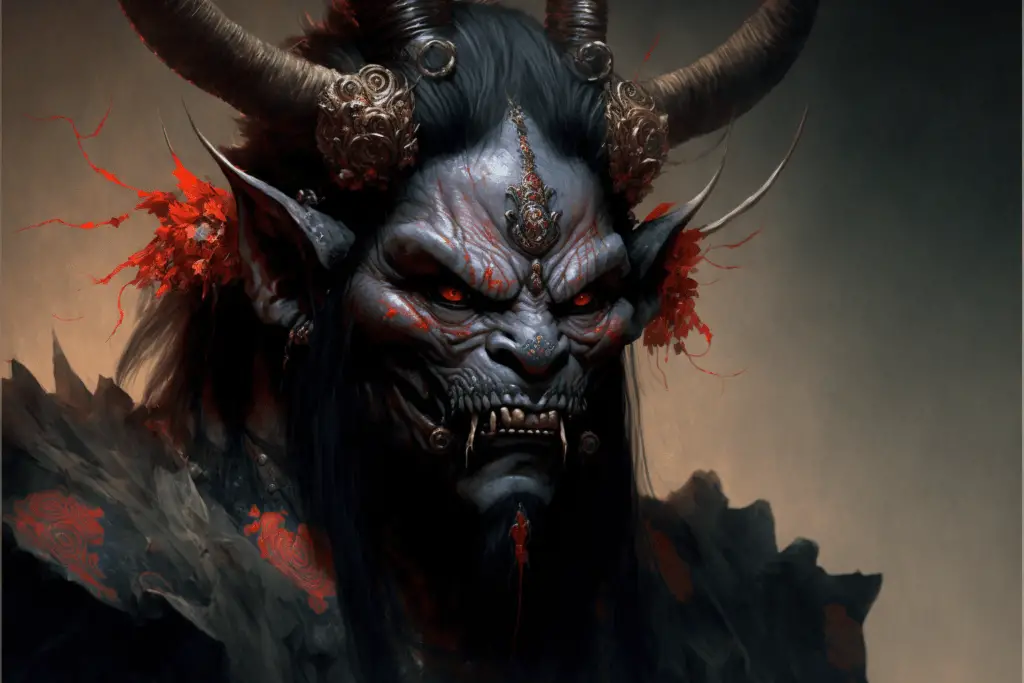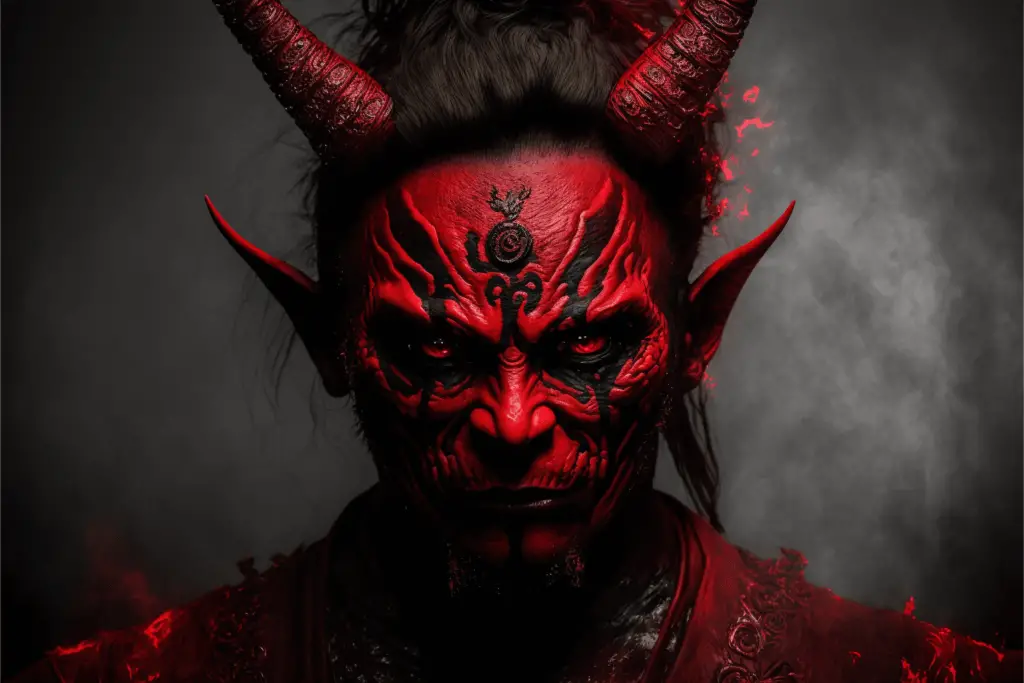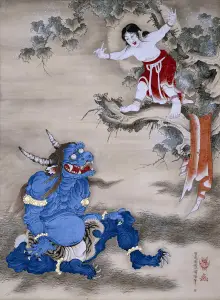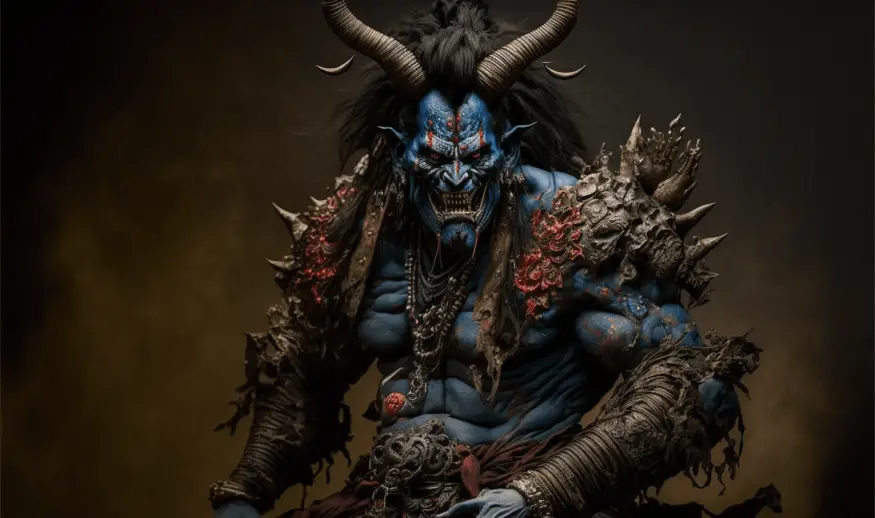Share the Lore!
By: Alex Postrado
Giant, Death-Dealing Demons Of Hell
Demons are pretty popular in folklore.
They are seen taking different shapes — depending on the culture — in diverse stories that are oftentimes equally chilling and intriguing.
Some notorious examples of these are Celtic mythology’s Fomoire, Germanic folklore’s Krampus, Christian mythology’s Incubus, as well as its typically female demonic counterpart, the Succubus.
However, there is a certain demon that has terrified Japanese regions ever since ancient times.
They are called Oni.
Oni are ogre-like demons and well-known icons of Japanese folklore.
And you have probably seen them before — especially if you have a taste for Japanese art, literature, films, and video games.
A mighty fierce stock villain in tales and stories, behold the legendary Oni!

What is Oni?
In Japanese lore, the word Oni refers to a classification of demonic beings or yōkai that are commonly depicted as “hulking figures” of great strength and towering size.
They come in varieties, but they often have untamed hair, sharp claws, two or more horns, and — frequently — red or blue skin — all of which sets them clearly apart from humans.
At times, they may also be seen with green, yellow, or black skin.
But, if anything, Oni looks more like an ogre or an orc, rather than a man.
In some ways, they may even resemble Cyclopes because other accounts detail changes in the number of their eyes, along with their horns, fingers, and toes.
Still, there remains a recurring element in the appearance of Oni and that is what they are often portrayed wearing.
Loincloths — believed to have been made from the pelts of wild animals.
And Oni don these garments with pride as they wield their iron kanabō clubs to frighten off humans.
The name Oni initially came from China — derived from a character, read as guǐ, which means ghost or spirit.
This understanding of the word gave rise to the idea that Oni are originally formless.
Mere souls of beings that were lost to death.

However, when Oni was introduced to Japan, it became more linked to “the Buddhist concept of demons” and later developed into the folkloric monsters prowling around the Buddhist Hells.
So, that obviously begs the question: if Oni used to be indistinct spirits, but are now demonic figures, which side of the scale are they on — the good or the bad?
Are Oni Good Or Evil?
According to the lore, Oni are formidable beings and ruthlessly violent. The lion’s share of Oni enjoy harming humans. Some accounts also note that they may even feed on the ones they kill — every so often, for no decent reason.
They possess extraordinary strength and are highly skilled in sorcery.
These would have made them the valuable allies anyone would want in their team — if only Oni are good.
Most versions of the story point out how callous and malicious Oni could be.
They use their brawn and apparent physical leverage to do harm.
While other times, they employ their powers to wreak disasters and spread disease.
Moreover, as servants of Enma, the great ruler of hell, Oni are tasked to carry through punishments in the pit — some of which include “peeling off skins, crushing bones, and rendering other torments too horrible to describe“.
Those tortures are reserved for corrupt sinners — those who are “wicked enough to enter Hell, but not wicked enough to become Oni”.
How Oni Are Created
It is believed that Oni were born as normal human beings.
If a human grows to be utterly evil — beyond redemption — during the course of their lifetime, at the time of their death, they will be reincarnated as an Oni — cursed to roam and serve in one of the Buddhist Hells.
On a more foreboding note, however, living humans can also transform into Oni if they are rotten enough to be one.
This part of the story opens the possibility for the existence of Oni on earth, which — given the demon’s sinister nature and propensity for violence — is doubtlessly far scarier because then, neither in life nor death would mankind be safe from damnation.

Oni in the Contemporary World
These days, Oni are widely seen in animes — like, Demon Slayer: Kimetsu no Yaiba — and video games — like, the Touhou Project and Dead by Daylight.
They have also appeared as focal villains in March of the Oni, the tenth season of the TV show LEGO Ninjago: Masters of Spinjitzu.
And as archetypes in the subsequent emergence of orcs in Dungeons and Dragons, Warhammer Fantasy, Warcraft games, as well as J. R. R. Tolkien’s hit high-fantasy novels, The Hobbit and The Lord of the Rings.
But, with the surge in Oni portrayals in pop culture, comes a wave of ultramodern interpretations for the hell-roaming fiend.
In recent years, the distinctive and utter wickedness of Oni began getting erased — causing them to no longer be confined solely to being diabolic.
In fact, there are now festivals and parades where Oni are revered — with some attendees even wearing Oni costumes and masks.
And for good measure, much like how European culture has gargoyles, several Japanese buildings also sometimes display Oni-faced roof ornaments known as onigawara to repel evil.
This change of heart in the way people perceive Oni nowadays — perhaps — shows just how things truly have changed.

People seem to constantly become less strict when it comes to passed-down traditions.
Things that used to be viewed only through monochromatic lenses were given a second look — a chance to explore the idea that not everything is plain black-and-white.
And pop culture proved to be the perfect vehicle to capture that diversity.
So, now, Oni — occasionally — serve as protectors, meant to ward off ills and bad luck.
Fair enough, because who would be best endowed to scare off evils than those who have already seen hell, themselves.
References:
Oni - Japanese mythology What is Oni in Japan? Creepin’ It Real: Oni Oni - Myths and Folklore Oni - Yokai Oni - Pop Culture
